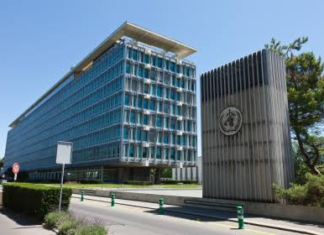CONVENTION ON FACILITATION OF INTERNATIONAL MARITIME TRAFFIC (FAL)
Adoption: 9 April 1965; Enforced on 5th March
1967
The Convention's main objectives are to prevent
unnecessary delays in maritime traffic, to aid co-operation between
Governments, and to secure the highest practicable degree of uniformity in
formalities and other...
WORLD HEALTH ORGANISATION & INTERNATIONAL LABOUR ORGANISATION
International Labour Organization
Member profile
The International Labour Organization (ILO), situated in Geneva, became the first specialized agency of the UN. It was established in the year 1919, in response to a destructive war, to pursue...
TECHNICAL QUESTIONS & ANSWERS PART-7
Q. Name the present ISO standard for marine fuel oil and explain salient features of it. With reference to a fuel oil analysis report, explain relevant corrective actions which can be initiated against various...
INTERNATIONAL POLAR CODE
The international maritime organization (IMO) has accepted
a mandatory Polar Code to provide for safe ship operation & environmental
protection in the Polar Regions. If you are onboard a ship in the Arctic or
Antarctic waters, then...
MLC TITLE 4. HEALTH PROTECTION, MEDICAL CARE, WELFARE AND SOCIAL SECURITY PROTECTION
Regulation 4.1 - Medical
care on board ship and ashore
Regulation 4.2 –
Shipowners liability
Regulation 4.3 - Health
and safety protection and accident prevention
Regulation 4.4 - Access to shore-based welfare facilities
Regulation 4.5 - Social security
Regulation 4.1 - Medical
care...
HOT PARTS IN MODERN LOW-SPEED TWO-STROKE MARINE DIESEL ENGINE
REQUIREMENTS
The requirements for the hot part
components are diverse and often conflicting with each other. Component
temperatures of 600 °C and above presuppose the correct material selection and
a proper cooling. The thermal stresses, caused by the...
LUBE OIL ANALYSIS
Oil analysis(OA) is the lab test of the lube oil properties, suspended contaminants, and wear debris. OA is performed during routine maintenance to provide meaningful and accurate information on lubricant and machine condition. By...
RESERVE BUOYANCY
Reserve buoyancy can be defined as the volume of the enclosed spaces above the waterline. It can be expressed as a volume or as a percentage of the total volume of the vessel.
The volume...










